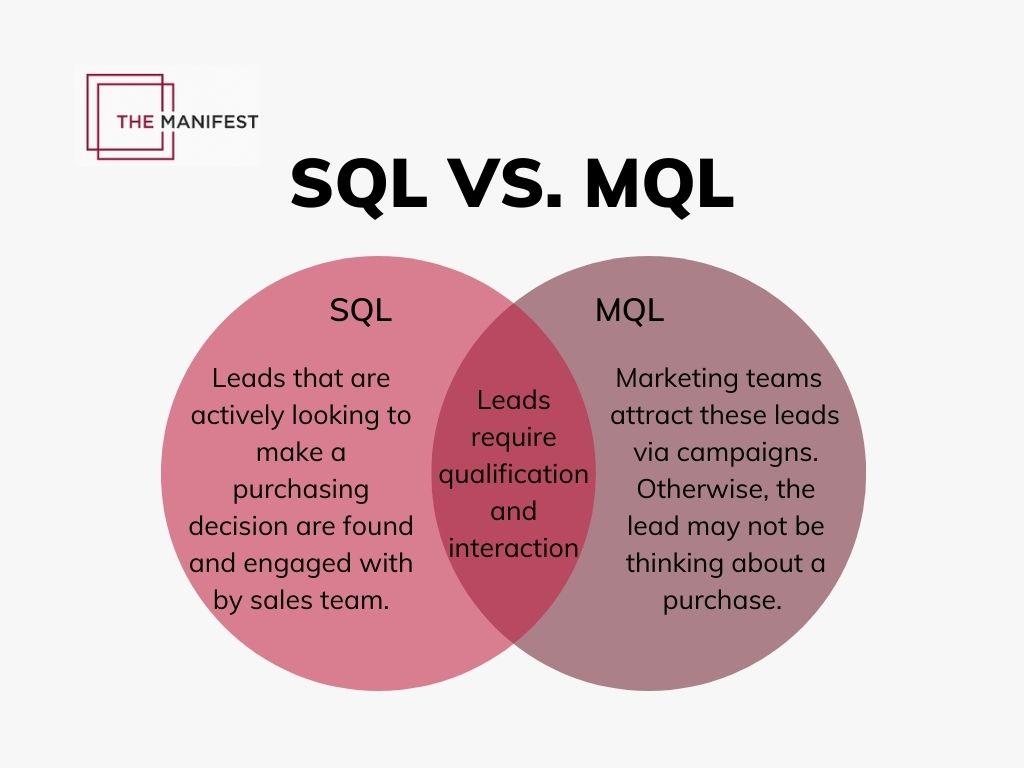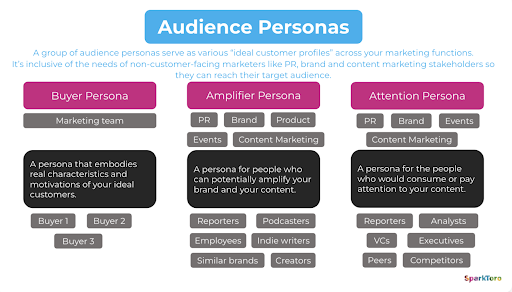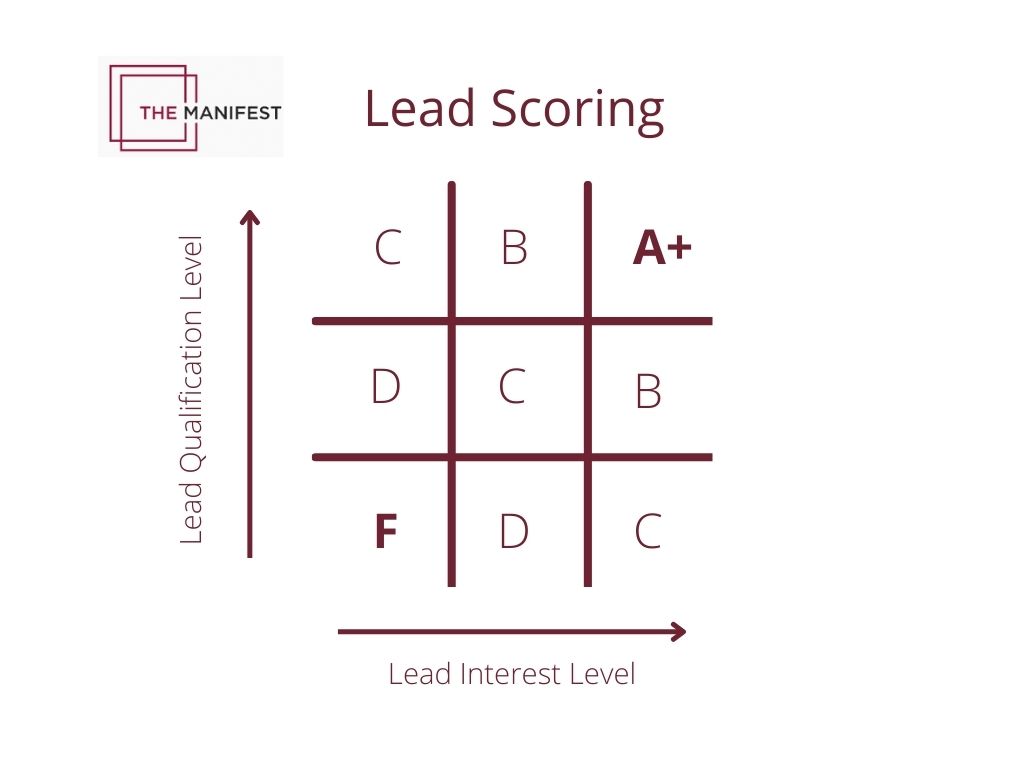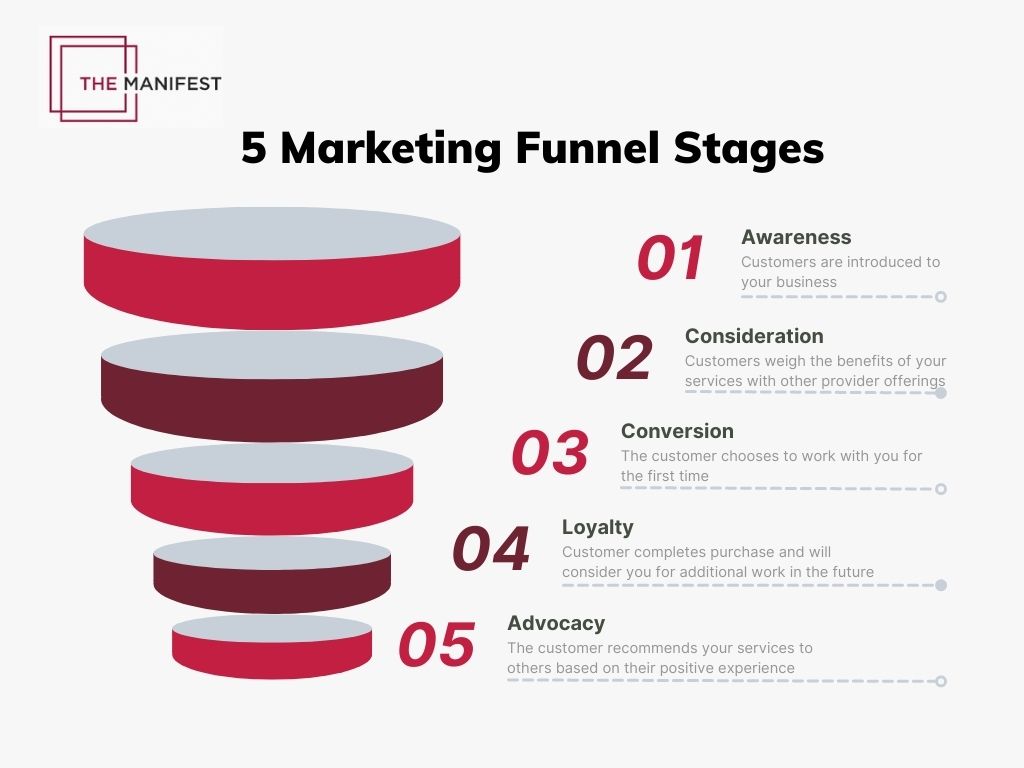What Is a Qualified Lead & How To Identify One

What Is a Qualified Lead & How To Identify One
Defining qualified leads is essential to any B2B sales process, as it helps you and your team identify and understand your ideal potential customer.
Every lead generation team’s primary goal should be to engage and expand a company’s existing customer base. By incorporating a lead qualification mechanism into your marketing team’s lead generation process, your company will be able to efficiently penetrate target markets and grow sales.
Looking for a lead generation company? Connect with a firm that meets your needs on The Manifest.
First Things First, The Difference Between Inbound & Outbound Lead Generation
It’s equally important to make the distinction between inbound and outbound lead generation.
Inbound Lead Generation: Inbound lead generation relies on digital marketing strategies such as content marketing and search engine optimization to bring more organic traffic to your website
Outbound Lead Generation: Outbound lead generation relies on leveraging marketing strategies that allow you to connect with potential clients. These strategies can be passive, like paid advertising, or active, like cold calling.
Both inbound and outbound lead generation are effective methods for small to medium-sized businesses to expand their client bases.
What is a Qualified Lead?
Qualified leads are high-quality leads that have contacted your business and, based on an internal set of criteria, are likely to become customers.
This definition is intentionally vague, as the scrutiny your marketing team uses in defining qualified leads may vary based on your overall digital marketing strategy as well as the market in which your business operates.
Regardless of strategy or industry, though, an unqualified lead is a potential customer that you and your team don’t have enough information about.
These leads may end up being valuable to your business; however, without the proper lead qualification strategies in place, you and your team may waste time pitching an uninterested party or overlook a strong potential client.
What Does a Qualified Lead Need to Have?
As we’ve discussed, the specific criteria for a qualified lead can vary from business to business. Still, there are some characteristics that qualified leads typically have.
Here’s a quick list for qualifying leads:
- A qualified lead’s information should be validated.
- Attributes such as company name, size, and industry must be accurate.
- Qualified leads must have demonstrated sufficient interest in your company's offerings.
Your business may have many ways for potential clients to contact you, but to optimize lead generation, contact via certain channels should be prioritized over others.
Majority of B2B Companies Are Outsourcing Some of Their Lead Qualification Activities
According to Smart Insights, “Most B2B companies (56%) use a combination of in-house and outsourced expertise, allowing them to make the most of others’ expertise while investing in external resources when required.”
Marketing Qualified Leads (MQLs) vs. Sales Qualified Leads (SQLs)
As you embark on your lead generation journey, your sales team will come across two distinct types of leads: marketing qualified leads (MQLs) and sales qualified leads (SQLs).

The two lead types are complementary, but understanding the differences between each is key to a successful lead qualification strategy.
What are MQLs?
Marketing qualified leads are potential customers that have been reviewed and approved by your business’ marketing team.
These leads are gathered as a result of your team’s digital marketing efforts. By vetting the lead’s background attributes, they can determine how well the lead matches up with your target markets and buyer profiles.
One of the most important qualities of marketing leads, though, is that they are not yet part of your company’s sales funnels.
While they haven’t expressed an interest in purchasing any of what your business offers, your marketing team has earmarked them as a party that could buy from you in the future.
Lead Nurturing for MQLs
As you and your team build a portfolio of MQLs, you’ll want to harness the power of lead nurturing. This term refers to the practice of building tangible relationships with buyers at every stage of the purchasing process.
When working with your marketing leads, you and your team should clearly communicate your business's value proposition and offer to answer any questions the potential clients may have.
Doing so will not only encourage these parties to further consider the idea of buying from you but will also allow you and your team to ensure that the leads are truly suited for your company.
By properly vetting and nurturing marketing qualified leads, you can encourage potential customers to thoroughly consider working with you.
What are SQLs?
Sales qualified leads are potential customers that have been reviewed and approved by your business’ sales team.
Sales leads are typically confirmed by your sales team after an initial outreach call with them. These leads are different from marketing leads because they represent parties that are actively looking to make a purchase.
The idea behind SQLs is to establish a sales pipeline for your company. By defining and reaching out to confirm sales-qualified leads, you and your team will create a more interactive buying process for your clients. In doing so, you’ll more effectively convert leads and generate sales.
Lead Nurturing for SQLs
When discussing MQLs, we touched on the idea of lead nurturing as a means of closing more sales. This idea is just as important for sales leads, but it should be applied differently.
The companies that make up these leads will be further along in the purchasing process than marketing leads, and as such will be looking to gather information about the purchasing process rather than your offerings themselves.
To properly nurture leads, your marketing and sales teams should work together so that your approaches to MQLs and SQLs are complementary.
Ideally, your marketing team will provide marketing leads with product or service information as well as answers to any questions they may have as they start on their purchasing journey. By extending the sales funnel and setting the tone for an interactive buying process, these lead nurturing efforts should help convert these leads into sales leads.
At this point, your sales team can help guide the potential customers through the rest of the buying process to ensure a smooth, worry-free experience that results in a sale for your company.
If you and your team embrace the differences between marketing qualified leads and sales qualified leads but approach qualified lead qualification as a fluid process, you’ll be sure to unlock efficiencies in your digital marketing and sales strategies.
4 Tips for a Stellar Lead Qualification Process
While lead qualification doesn’t have to be a difficult process, investing the proper time into it will pay dividends for you and your team. Here are 4 ways to better your lead qualification efforts:
- Create detailed audience personas
- Consider utilizing lead scoring
- Establish a marketing funnel
- Use a CRM for marketing automation
Read on for an in-depth discussion on how to use these tips to build a lead qualification strategy that will set you apart from your competitors.
1. Create Detailed Buyer Personas (or Audience Personas)
In order to properly qualify leads, you and your team have to understand the risks and opportunities facing potential clients. A great way to do so is by crafting audience personas.
An audience persona is a general profile of an ideal client built based on prior experience and research. In the B2B space, these customer profiles can be designed to emulate businesses that are the prime targets of your marketing and sales efforts.
Audience Personas Vs. Buyer Personas
Leveraging audience personas is the best way to construct a robust marketing strategy.
Amanda Natividad, Marketing Architect at Sparktoro explains why, “I have a bone to pick with buyer personas, but it’s only because I like them (in contrast to Rand who doesn’t like them; yes, we can disagree). My quibbles? There’s a misguided focus on demographics, arbitrarily chosen stock photos, and cutesy alliterative names. Your customer’s gender rarely has anything do with their purchase decision, and it doesn’t matter if you name them Marketing Martin or Finance Fiona.”
Natividad goes on to say, “I’ll argue that it’s more helpful to create personas across marketing disciplines — a group of audience personas, if you will. A group of audience personas would serve as various “ideal customer profiles” across your marketing functions.”
You’ll want to build these audience profiles not just based on demographics gathered from first-hand customer research, but also take a step back and look at the entire marketing journey—buyer persona, amplifier persona and attention persona.

Source: Amanda Natividad, Sparktoro
Via phone calls, surveys, and in-person interactions, you and your team should be able to gather defining characteristics and audience motivations of each persona as well as ways for your sales reps to identify them.
When putting together these profiles, you should incorporate the challenges and goals of the business as well as how you and your team can help the business overcome the challenges and meet its goals.
Once you’ve created personas, you can use them to help both your sales team and your marketing team generate and qualify leads.
Your marketing team can leverage the research that went into crafting the customer profiles to optimize your company’s overall digital marketing strategy.
They should have found information about the following to generate the greatest number of qualified leads:
- Marketing channels
- Purchasing priorities
- Company size
- Other demographics that can shape future marketing campaigns
For your sales team, the audience personas can be used to strengthen their pitches to different types of clients.
Not only will the profiles outline important characteristics of businesses, but they can also include direct quotes from previous clients that will help turn MQLs into SQLs and SQLs into clients.
With insightful audience personas in tow, you and your team should see an influx of sales-qualified leads and marketing-qualified leads.
2. Consider Utilizing Lead Scoring
As your business strives for operational efficiency in all possible areas, incorporating lead scoring into your lead qualification strategy can help you and your team most effectively identify your ideal customers.
What is Lead Scoring?
The term lead scoring refers to the practice of ranking your business’ leads according to demographic and behavioral criteria to prioritize leads that are most likely to convert into sales.

By scoring your qualified leads, you and your team can ensure that the most viable potential clients are contacted in a timely manner. For the practice to work as intended, though, synergy will be required from your team.
Your sales team and your marketing team will need to agree on how to weigh lead criteria prior to kicking off any lead scoring efforts.
However, if you’re already qualifying leads, the actual implementation of your lead scoring process should be relatively easy.
Tight Communication Between Sales & Marketing is Paramount
Ideally, there should be fluidity between your sales and marketing teams as MQLs turn into SQLs.
Lead scoring should complement this fluidity, as it will simply inform the order in which your marketing team hands off MQLs to your sales team as well as the order in which your sales team works to contact and close sales with SQLs.
Once your lead scoring process is stood up, you and your team should revisit it regularly to ensure it’s running as intended.
Be sure to consider trends of digital marketing metrics such as email unsubscribe rate, average engagement per lead, and sales cycle time. If your metrics aren’t progressing in the proper direction, you’ll want to reconfigure your lead scoring system so the most viable leads are being promoted.
With lead scoring incorporated into your lead qualification efforts, you and your team can maximize efficiency and prioritize contacting the most sales-ready leads.
3. Establish a Marketing Funnel
Earlier in the article, we discussed the concept of a sales funnel, in which processes are in place for your sales team to guide potential customers through the entirety of the buying process. We also illustrated how a strong lead qualification process can extend the sales pipeline.
To truly extend this funnel to cover the entirety of the purchasing process, though, your business should establish a marketing funnel.

The term marketing funnel refers to the processes by which your marketing team guides potential clients through their entire journey with your company. One way to look at the marketing funnel is through the lens of the following 5 stages:
- Awareness: The customer knows that your business exists and will consider you in future purchasing decisions
- Consideration: The customer is weighing the opportunity to work with your business as part of a current purchasing decision based on the information provided by your team about your company’s value proposition
- Conversion: The customer has decided to work with your business based on the value demonstrated by your marketing and sales teams
- Loyalty: The customer has finished their engagement with your business but will consider you for future work thanks to the positive customer experience delivered by your team
- Advocacy: The customer is willing to recommend your business to their colleagues after one or more successful projects together, thereby growing your customer base
As you can see, maintaining a marketing funnel goes hand-in-hand with maintaining a sales funnel. Especially in the business-to-business space where sales reps are present throughout the purchasing process, building a marketing funnel can be as simple as extending your sales funnel to consider marketing qualified leads.
By implementing a marketing funnel, you’ll cement the connection between MQLs and SQLs. This connection will improve the efficiency of your lead generation process and deliver a more unified customer experience.
4. Use a CRM for Marketing Automation
While implementing a lead qualification process can be a game-changer for your company, it will put additional strain on your sales and marketing teams. To limit this strain, you should look for marketing automation opportunities wherever possible.
A great way to automate your marketing processes is to implement a customer relationship management (CRM) system.
CRM refers to the procedures and practices your business follows when interacting with clients.
Because digital marketing has exponentially expanded the breadth of customer interaction channels, there is no shortage of CRM software that can make this process as easy as possible:
CRM software will allow you to track and store information about leads that can help you qualify them. Many platforms also include lead scoring capabilities that will allow you to prioritize your qualified leads as outlined earlier in this article.
Once your leads are sufficiently qualified, you can leverage the CRM to take actions to follow up on the leads. One major way to do so is an automated email marketing campaign. The software will allow you to generate templates and schedule times to send correspondence to a list of qualified leads.
As you assess the healthiness of your lead generation system, the CRM can also provide you with relevant digital marketing metrics. As discussed earlier, these metrics should guide changes to your efforts to best qualify and prioritize leads.
CRM systems have been proven to add value to businesses. In fact, studies show that companies make up to $8 back from every $1 invested into a CRM.
To make your lead qualification process as easy and effective as possible, your business should leverage the power of CRM software.
Defining qualified leads can be complicated. Find and evaluate top lead generation firms on The Manifest.
Lead Qualification FAQs
What does qualifying a lead mean?
Qualifying a lead means researching a lead to gather relevant information to determine the viability of the lead as a potential sale for your business.
What is the difference between a lead and a qualified lead?
A lead represents a potential customer for your business, but a qualified lead has been verified via direct and indirect research as a likely user of your company’s offerings.
What are the benefits of qualifying leads?
Qualifying leads ensures that your team’s time is not wasted following up with leads that are not interested in or not a fit for what your business sells.
Additional Reading
